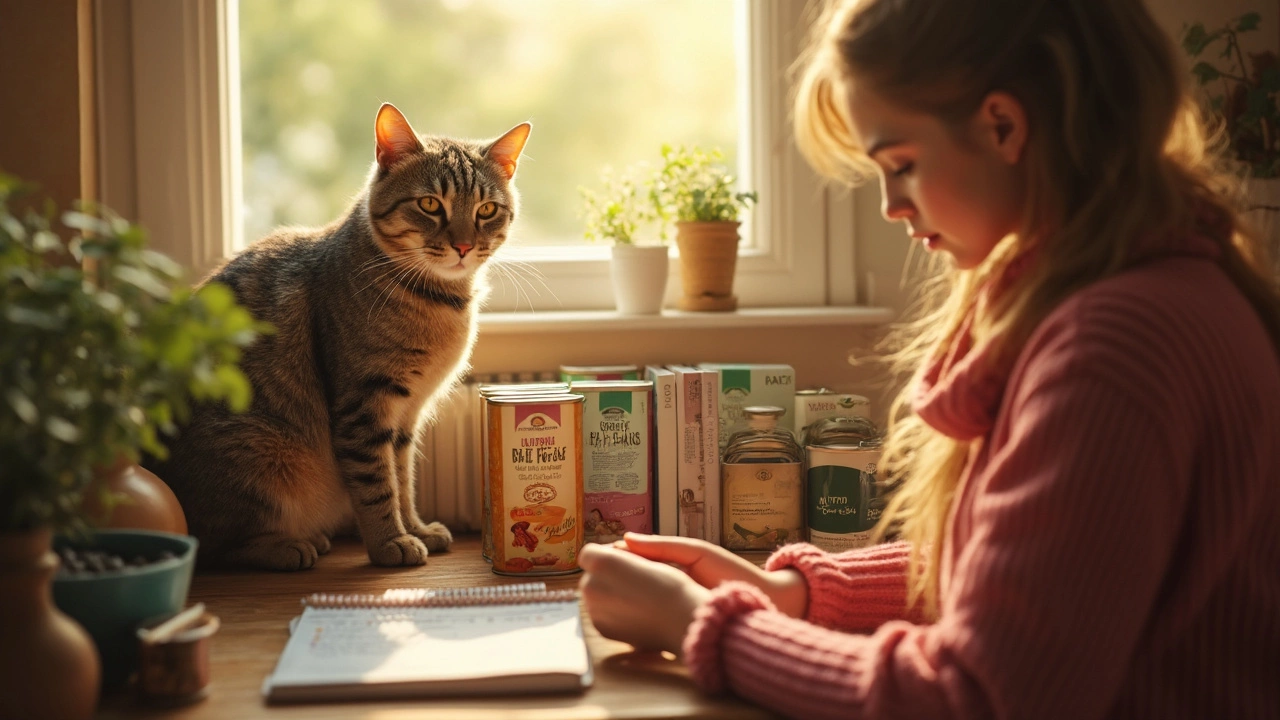Cat Food Tips: Quick, Easy Ways to Feed Your Feline Right
Feeding a cat can feel like a puzzle, especially with all the options on the shelf. The good news is you don’t need a degree in nutrition to get it right. Below are straight‑forward tips that work for most cats, whether you’re feeding a picky kitten or a laid‑back senior.
Choosing the Right Type of Cat Food
First, decide if you want wet, dry, or a mix. Wet food packs more moisture, which helps cats stay hydrated and can be easier on their teeth. Dry kibble is convenient, cheap, and great for dental health because the crunch helps scrape plaque.
Read the label. Look for real meat as the first ingredient – chicken, turkey, or fish – and avoid meals that start with "by‑products" or "meal". A good cat food should have around 30‑45% protein and low carbs; cats are obligate carnivores and don’t need grain fillers.
Check the guaranteed analysis for moisture, protein, fat, and fiber. A typical adult diet might list 8‑10% moisture for dry food and 70‑80% for canned. If your cat drinks a lot of water, you can lean more on dry kibble; if they’re prone to urinary issues, add more wet food.
Practical Feeding Hacks
Portion sizes matter. Follow the feeding guide on the bag, then adjust based on your cat’s weight and activity. A quick rule: a healthy adult cat needs about 20‑30 calories per pound of body weight per day.
Serve meals at the same times each day. Cats love routine, and a predictable schedule helps with digestion and prevents overeating. If you’re away for work, split the daily portion into two or three small meals.
Store food properly. Keep dry kibble in a sealed container to keep it fresh and crunchy. For canned food, refrigerate leftovers in an airtight dish and use them within 24‑48 hours.
Don’t forget treats. Treats should be less than 10% of daily calories. Use them for training or to hide medication, but choose low‑calorie options and count them toward the total intake.
Hydration is key. Even if you feed wet food, always provide fresh water. Some cats prefer moving water, so a cat fountain can encourage them to drink more.
Finally, watch your cat’s stool and weight. A healthy cat usually has firm, brown stools and maintains a steady weight. Any sudden changes in appetite, weight, or bathroom habits merit a vet check.
With these simple cat food tips, you’ll feel confident picking the right food, feeding the right amount, and keeping your feline friend thriving.

Best Cat Food: What Really Deserves the #1 Spot?
Picking the best cat food isn't as simple as grabbing the prettiest bag from the shelf. Cats have specific nutritional needs that can make food shopping overwhelming. This article breaks down what really matters when choosing the top cat food, covering quality ingredients, real-life feeding tips, and what top-rated options get right (and wrong). Cut through the marketing noise and find out how the best cat food stacks up against the rest, with practical advice for anyone feeding a feline. Get the facts, not the fluff, so your cat eats better and stays healthier.
View more